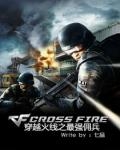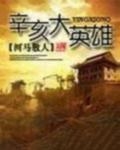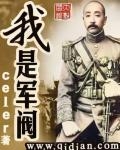Volume 1: The Empire Awakens Chapter 17: The New Military Revolution (Part 2)
"New Military Revolution" is a name that was coined later. It is a general term for the tremendous military changes that took place in the more than twenty years between the end of the First World War and the outbreak of the Second World War.
This military transformation mainly focused on two aspects (the Tang Empire called it, but it was divided into three aspects in other countries), namely armored mechanization and the dominant position of air forces in war.
Armored mechanization, which is mainly focused on the army, is not within the scope of discussion.
After the world's first aircraft carrier "Langley" (converted from the 5,500-ton naval coal carrier "Jupiter" by the United States) was put into service, the Imperial Navy also began to develop its own aircraft carrier, and two years later, it built the first experimental aircraft carrier "Aviation Pioneer".
This is a small aircraft carrier with a displacement of less than 8,000 tons, mainly for testing purposes.
However, when the world's naval powers began to build large fleet carriers, the Imperial Navy did not build a real fleet carrier for ten years.
It was not until five years ago that the Imperial Navy approved the construction of the "Emperor" class fast fleet carrier.
In comparison, the Empire's way of developing aircraft carriers is very unique.
Almost all naval powers adopt the approach of small steps and fast progress when developing aircraft carriers, gradually becoming familiar with the construction and use of aircraft carriers by building several experimental aircraft carriers.
On the contrary, after building the "Aviation Pioneer", the Tang Empire spent almost all its energy on building battleships within ten years to replace the old battleships and continue to maintain the "Two Powers Principle". As a result, for ten years, the engineers of the Imperial Navy could only grope on the drawings, and there was a serious lack of funds.
If General Liao Hanxiang had not "jumped ship" to the Navy five years ago and persuaded Marshal Sagittin that all other powers were vigorously developing aircraft carriers, the construction of the "Emperor" class aircraft carrier would probably have been delayed for several years.
The conservative thinking of the Imperial Navy, the huge military budget cuts after the war, and the large number of old warships waiting to be replaced in the Imperial Navy.
All these caused the Imperial Navy to lose the first ten years of precious time.
However, the Empire's powerful shipbuilding industry, large team of naval engineers, and strong industrial base enabled the Imperial Navy to transform from a country without aircraft carriers to an aircraft carrier power almost overnight.
When the "Gaozu" was launched, it was the aircraft carrier with the largest number of aircraft in the world, and was also hailed as the most advanced aircraft carrier.
Of course, this is just on the surface.
Tan Renhao has a special liking for aircraft carriers. When he first learned about this powerful naval combat weapon from internal reference materials, he concluded that aircraft carriers must be the future maritime overlords and the new battleships that will eliminate the battleships that have dominated the oceans for hundreds of years from the long river of history.
However, in this revolution of the Imperial Navy, there were not many people who shared the same ideas as the pioneers such as Tan Renhao and Liao Hanxiang, especially in the high-level of the Imperial Navy. From Marshal Sagittin to the commanders and chiefs of staff of other fleets, and presidents of major universities, almost all of them were supporters of the "big ships and big guns" doctrine. They simply did not believe that a mosquito could kill an elephant, and they did not believe that those fragile planes could pose a threat to the tough battleships.
It can be said that the Imperial Navy was far behind its three main rivals (Japan, the United States, and the British Empire) in the development of aircraft carriers.
According to the provisions of the Songjiang Treaty, the Empire can build a total of 100,000-ton aircraft carriers, and the total displacement of the three "Emperor" class aircraft carriers (the "Aviation Pioneer" was officially retired two years ago) is less than 60,000 tons (standard displacement). In other words, the Empire still has a lot of room to build new aircraft carriers.
However, the Imperial Navy has not yet introduced a plan to build new aircraft carriers. Instead, it is building three "Dignity" class battleships to replace the three "Chongqing" class battleships that entered service at the end of World War I.
Tan Renhao and Hao Dongjue are both avid aviation enthusiasts, and both are loyal followers of General Liao Hanxiang. They also "actively" requested to join the Fifth Fleet.
As a result, when talking about the current situation of the Imperial Navy, both of them felt very angry, but their expressions were completely different.
"Anyway, if this is the chance now, we are missing this last chance!"
Hao Dongjue was very excited, and unknowingly, he had adopted the tone of a leader.
"The Imperial Navy has been able to dominate the ocean for hundreds of years. In addition to the strong national strength and the hard work of dozens of generations of naval officers and soldiers, we have almost never been left behind by the enemy in any military revolution. If we miss this opportunity, maybe in five years, someone will regret it."
Tan Renhao smiled bitterly and said nothing. He had the same feeling as Hao Dongjue, but he was not as excited as Hao Dongjue.
They are just second lieutenants in the navy, the lowest-ranking officers. Perhaps, ten or twenty years later, they will become admirals of the Imperial Navy. However, before becoming admirals, it would definitely be a huge mistake to comment on the development of the navy or even intentionally hint at the wrong decisions made by the navy's top brass.
In sharp contrast to the excited Hao Dongjue is Chang Jianxin.
He was not well versed in aviation combat theory and was considered a semi-conservative naval officer.
However, during this period of time, he was greatly influenced and gradually recognized the advanced aspects of aviation combat theory. However, he was not as excited as the two young men who were five years younger than him. Instead, he was very steady.
"Renhao, shouldn't we come up with a plan and use the Japanese fleet as our imaginary enemy ? If we can make the exercise a success, maybe Marshal Sagittin will take notice."
Tan Renhao shook his head and said to the excited Hao Dongjue: "First of all, this is not a problem we should consider. How to conduct the exercise is definitely decided by the Navy Command. We are just the ones who carry out the mission. Secondly, even if we want to prove something, we will not use the Japanese fleet as a target. We can't expose the strength of the Imperial Navy to the most likely enemy, right?"
Hao Dongjue was stunned for a moment, then sat down with a gloomy expression.
"Let's just finish the task at hand!"
Chang Jianxin came out and ended the discussion, "At least, we should complete the task on time."
"Yes, let's do our own thing first!"
Tan Renhao let out a long breath, and his mood gradually calmed down. "During this period, we don't need to be so nervous. Let's collect some information first. Let's follow the division of labor last time and formulate several plans for the Japanese fleet that may visit. Is that okay?"
They both shook their heads and new work began.






